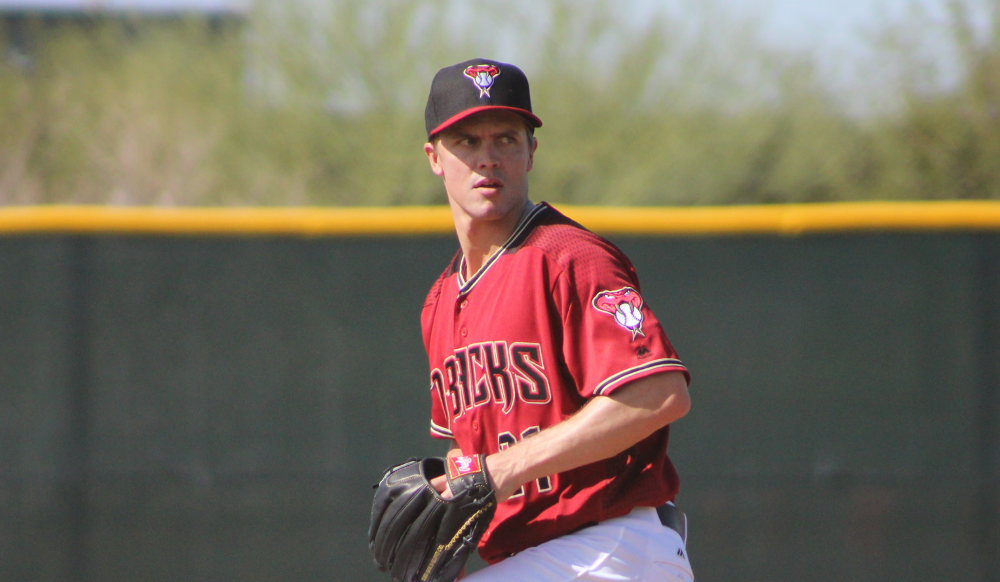Periodically, I’ll be posting notes from in-person observations at Fall Instructional League and Arizona Fall League play. Each are essentially the scouting calendar’s dessert course, both in their timing and sometimes dubious value. I take bad fall looks with a large grain of salt as players are sometimes fatigued, disinterested, put in difficult situations purposefully so that they’ll fail, or some combination of these or other bits of important context. With that in mind here are links to past notes followed by this edition’s.
Previously: 9/20 (TEX, SD), 9/21-9/23 (SD, CHW, MIL, TEX), 9/24-9/25 (CIN, TEX, LAD, CWS).
9/27
The talent at the Angels complex in Tempe has significantly improved in the last calendar year due to an influx of projectable Latin American pitching and the bevy of athletic outfielders the club has added mostly through the draft. Among those pitching this fall is RHP Stiward Aquino, a 6-foot-6, 18-year old Dominican righty. Aquino’s fastball sat in the 87-92 range but it will bump 95 and there might be more coming as he fills out. His delivery isn’t especially graceful or powerful right now — a byproduct of Aquino’s immature physicality – but it is deceptive and there’s some changeup feel here already. Aquino slots in near the bottom of a suddenly deep hierarchy of low-level Angels pitching prospects, but is worth following.
Chris Rodriguez threw this day as well and struggled. He sat 92-94 with his fastball and was up to 96, but his secondary stuff simply wasn’t as sharp as it had been earlier in the year. Minor League Rule 5 pick Adrian Almeida sat 94-96 with an average curveball, but he continues to struggle with control.
Jo Adell has returned to action in the outfield after DH’ing throughout the summer. He wasn’t throwing well this spring prior to the draft which was disconcerting to some, as Adell was touching 94 as a pitcher the summer before. His arm strength still hasn’t returned — he’s throwing with a 30 arm right now. He looks great in the batter’s box and is running well enough to continue playing center field for a while, but he’ll be limited to left field if his arm strength doesn’t return.
Giants OF Sandro Fabian had a rough year at Low-A, largely due to a hyper-aggressive approach that led to a 2% walk rate. He’s making among the loudest contact at Instructional League, with multiple exit velocities in excess of 100 mph during my in-person looks. He tracks pitches well, has great timing and bat control and can drive balls to all fields. There’s special offensive talent here, and I’m still buying stock in Fabian even after a horrendous season.

With the Dbacks in the playoffs, guys like Chris Owings needed at-bats to stay ready, just in case.
(Photo:
Keith Allison)
10/2
The Diamondbacks play precious few instructional league games this fall– just three, and one of them isn’t open to the public – and as such are a priority on the days that they do. They faced Oakland in their opener. Arizona prospects were robbed of some at-bats this year due to their playoff berth as Ildemaro Vargas, Chris Owings, Yasmany Tomas and Jeremy Hazelbaker have required at-bats to stay sharp in case they’re suddenly needed by the big club. Owings was rusty on this day and looked a bit slow, running in the 4.3s from home to first instead of his typical blazing 4.1.
Arizona LHP Jordan Watson has perhaps the best breaking ball I’ve seen here this fall, a true plus-plus hammer with bat-missing bite. He didn’t throw many, instead focusing on a low-90s fastball and below average changeup during his outing. He’s 24 and hasn’t pitched in a full season league yet due to injury, but he could be a quick-moving lefty relief piece next year.
Oakland RHP Richard Morban sat 90-93 with a fastball that missed bats up in the zone. He also flashed an above-average changeup in the mid-80s and a fringey, low-80s curveball. Morban turns 20 on Christmas Eve and is a modestly framed 6-foot-2. Though not especially explosive, he is athletic and repeats his delivery, and I think he’ll throw enough strikes to start. He has back-end starter ingredients.
Athletics INF prospect Marcos Brito has shown terrific quickness in his bat, as well as his defensive footwork and actions. He diagnoses balls and strikes consistently and has good feel for opposite field contact, though he struggles to turn on and drive the ball to his pull side.


